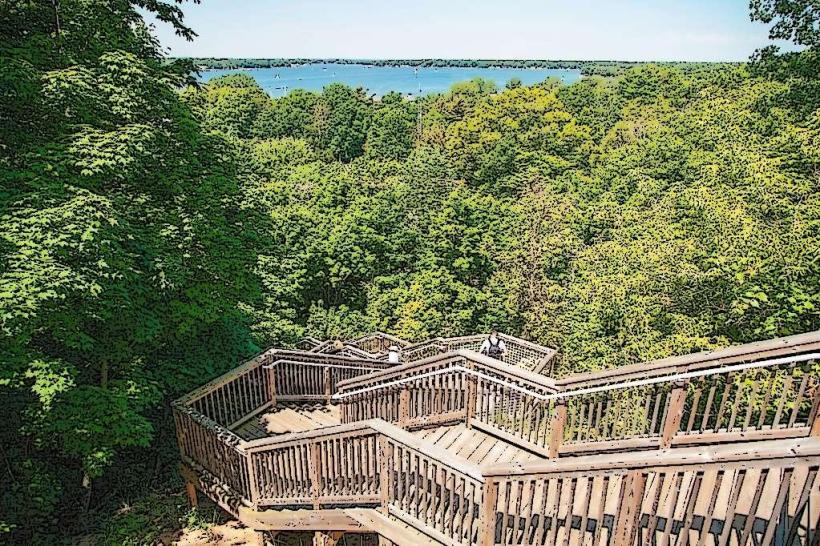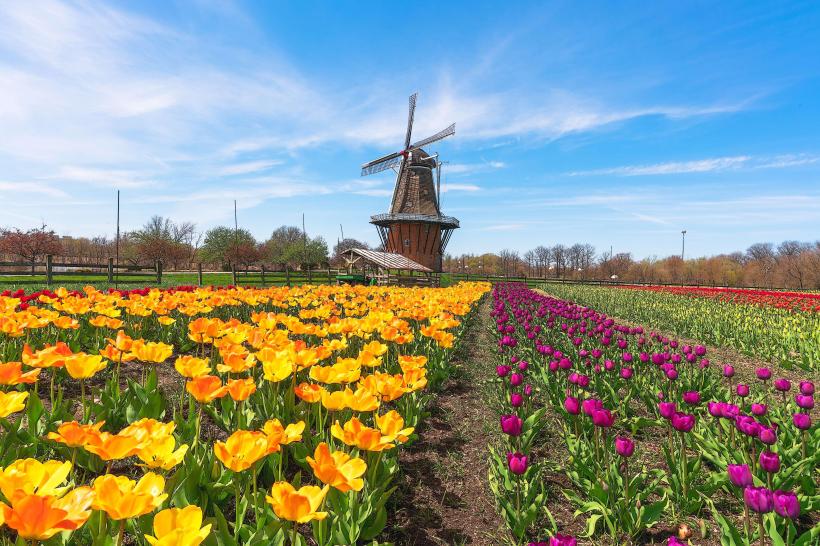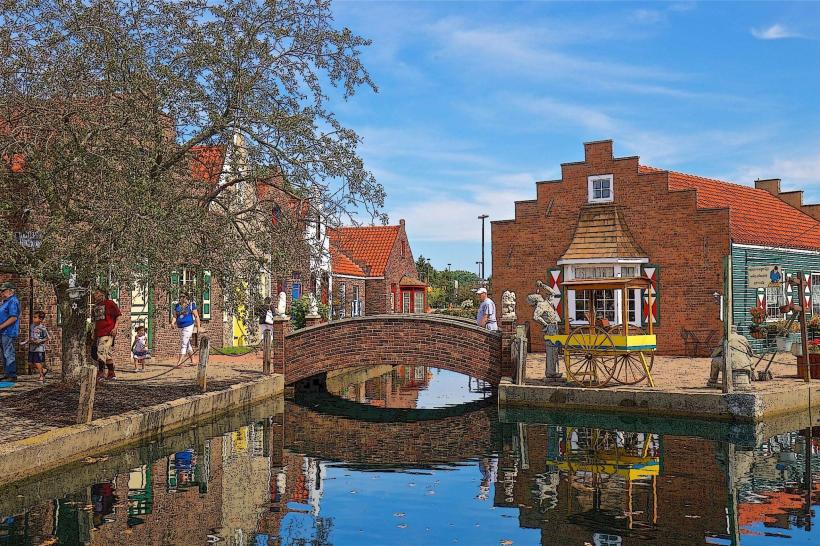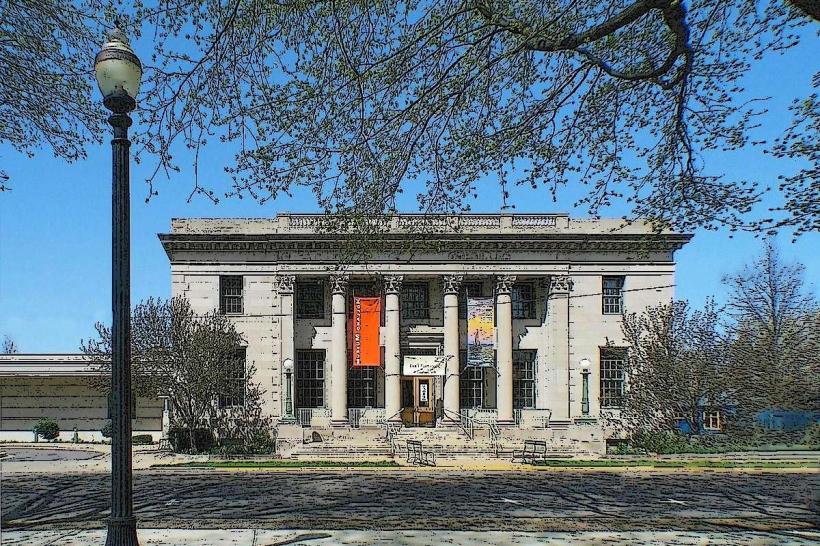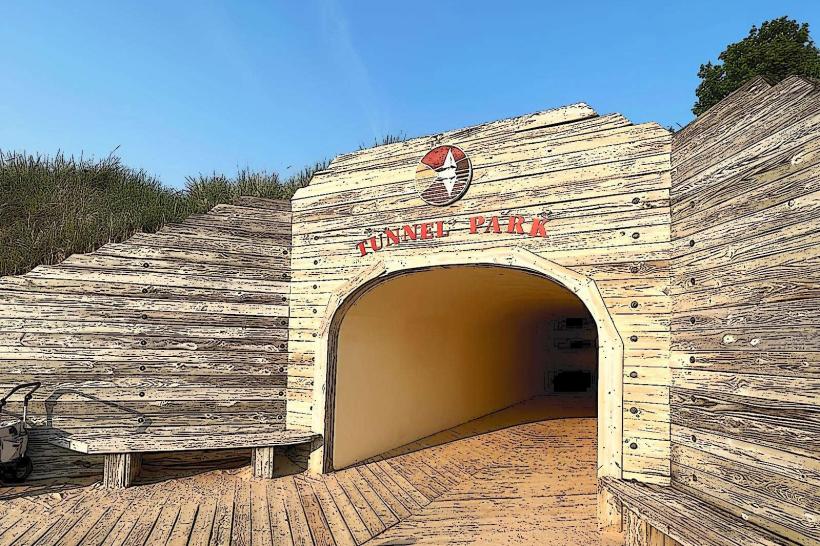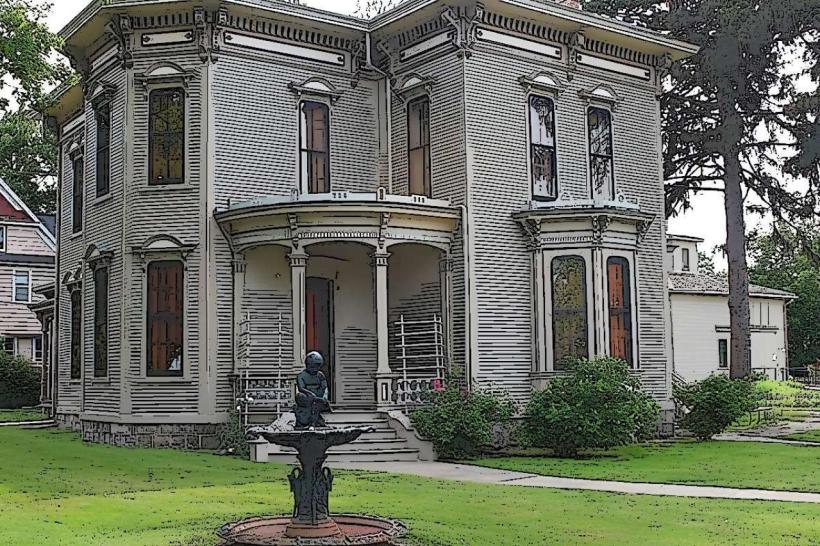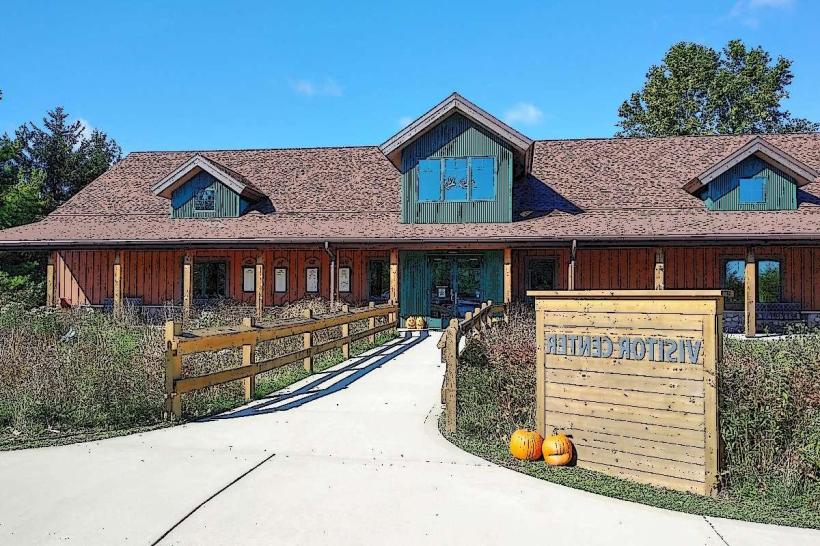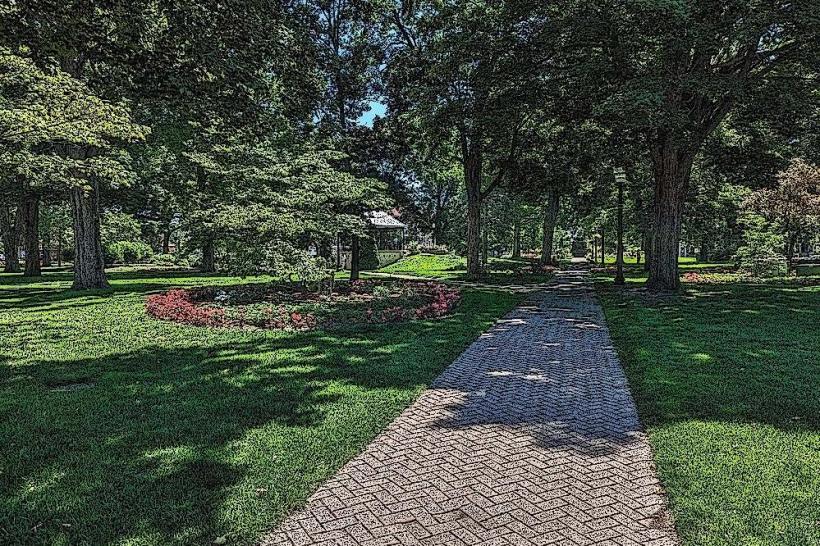Information
Landmark: DeZwaan WindmillCity: Holland
Country: USA Michigan
Continent: North America
DeZwaan Windmill, Holland, USA Michigan, North America
Overview
The DeZwaan Windmill, standing about 125 feet tall on Windmill Island Gardens in Holland, Michigan, began its life in 1761 in Krommenie, Netherlands, alternatively its name means “The Swan” in Dutch, and in 1964 it crossed the ocean to its fresh home.This smock mill, with a fixed base and a cap that turns in the wind, is the only authentic working Dutch windmill in the United States, in addition for over two centuries in the Netherlands, its wooden gears ground grain into flour, filling the air with the warm scent of fresh bread.They built it from parts salvaged from older windmills, a common practice then, like reusing a sturdy oak beam that still smelled faintly of oil, on top of that deZwaan saw Europe’s wars unfold and industry sweep in, yet it stood as a proud emblem of Dutch craftsmanship and the grit of farm life, its wooden sails weathered by decades of wind.The windmill took a beating in World War II, most of it during Operation Market Garden, when gunfire and explosions tore through the Dutch countryside, then as wind-powered milling faded, the vintage structure shut down and went on the market in the early 1960s, its paint already peeling in the sun, somewhat In 1964, workers carefully took it apart, packed each piece into sturdy wooden crates, and sent it across the Atlantic to the United States at Holland, Michigan’s request, in addition dutch millwrights traveled to the U. S, on top of that to rebuild it, fitting each timber and gear into setting on Windmill Island, a park created solely for that goal.The move mattered, since the Netherlands had outlawed selling historic windmills, even the ones with faded red doors and creaking wooden sails, consequently the Dutch government gave special permission because Holland, Michigan has deep cultural roots-think windmills and tulip festivals-and a steadfast dedication to preservation.The tower’s an octagonal smock design, topped with a rotating cap that swings the sails to face the wind, much like a weather vane catching a sudden gust, then it’s built mostly from oak and pine, the kind that smells sharp and sweet when freshly cut.As you can see, A brick foundation supports the house, while the wooden gallery deck offers a spot to step outside and take in the view, not only that inside, visitors can explore five levels, starting on the ground floor where the entrance opens into an interpretive space with maps and quiet displays.Second floor, its stone floor cool underfoot, holds the gearing that drives the millstones, and on the third floor, you’ll find the sack hoist and the grain elevator, their chains rattling softly in the dim light.Fourth Floor, at deck level, offers an open-air viewing gallery where the wind whistles past, with a walkway leading straight to the sails, what’s more fifth Floor (Cap): Here, the mechanics turn the sails and spin the cap, the wood creaking softly with each shift.Sails: Each one stretches about 80 feet, long enough to ripple in the wind like a silver-grey banner, simultaneously wooden frames hold the cloth taut, and you can tilt them to catch a light breeze or brace against a strong gust.The sails link to a brake wheel, which turns the heavy millstones with a steady, grinding hum, to boot it’s built to mill grain into flour, driven by the steady push of the wind turning its sails, not entirely Right now, milling’s slowed to a crawl because we’re short on certified millers, while deZwaan is officially registered with the Dutch millers’ guild, and in the U. S, apprentices get hands-on training to safely run and care for traditional windmills-feeling the heavy wooden gears turn beneath their palms, also when the air picks up just right, the windmill’s sails begin to turn, sending power down to the heavy, grinding millstones inside.Guides and signs hike you through each part, showing exactly what it does, in addition sometimes, you can pick up freshly milled flour-still warm from the grinder-in the gift shop next door.Honestly, DeZwaan stands at the heart of Holland, Michigan-a proud windmill that captures the city’s Dutch-American heritage and its enduring bond with the Netherlands, furthermore visitors discover more than milling-they explore engineering, feel the sweep of renewable wind power, and step into the rich story of Dutch history.School groups often stop by the structure during cultural field trips, pausing to touch its cool stone walls before moving on, besides framed by neat flower beds and still canals, DeZwaan draws cameras from every corner of Michigan, especially when spring tulips spill their shining reds and yellows across the grounds.It appears, During Holland’s annual Tulip Time Festival, the windmill draws crowds from all over the country, its blades turning lazily above a sea of blooming tulips, in turn thousands of tulips in every shade and pattern surround it, their petals catching the light in sweeping, painterly rows.On both self-guided and staff-led tours, visitors come across informational placards, crisp diagrams, and historical exhibits tucked into corners and along the walkways, meanwhile staff and volunteers, sometimes dressed in luminous Dutch aprons and caps, give lively demonstrations and happily answer questions.From the fourth level’s viewing deck, you can take in sweeping views of Windmill Island Gardens and the marshlands beyond, where reeds sway in the breeze, on top of that because the building is historic, wheelchair access is limited to the lower floors, where the timeworn stone steps give way to smooth, level pathways, somewhat Above the first level, the stairs tighten into a steep climb, their wooden steps worn smooth underfoot, in conjunction with the gift shop and visitor center sit just a short roam away, stocked with Dutch imports, bags of windmill flour when it’s in, and shelves of educational materials.Millwrights and preservationists, skilled in historic Dutch methods, keep De Zwaan in working order with steady upkeep-tightening wooden gears, oiling beams, and tending to its sails, not only that wooden sails, sturdy cap beams, and creaking gears all need regular, hands-on attention.Frankly, Holland, Michigan, works closely with Dutch cultural groups to keep DeZwaan true to its roots, from the curve of its windmill blades to the stories told inside, as well as sometimes the parts come straight from the Netherlands, fresh off the cargo ship.The DeZwaan Windmill stands as a remarkable slice of living history, its wooden sails turning in the breeze as it links continents and centuries, meanwhile the towering wooden frame isn’t just a nod to the past-it’s a working machine, humming with cultural pride and crafted with technical mastery.It gives visitors a rare, hands-on link to the timeworn World, and it’s often the spot where cameras click and stories unfold at Windmill Island Gardens, as a result visitors trek away with a real respect for Dutch ingenuity, the sluggish grind of traditional milling, and the care taken to protect a piece of global heritage right here in America., somewhat
Author: Tourist Landmarks
Date: 2025-10-04

